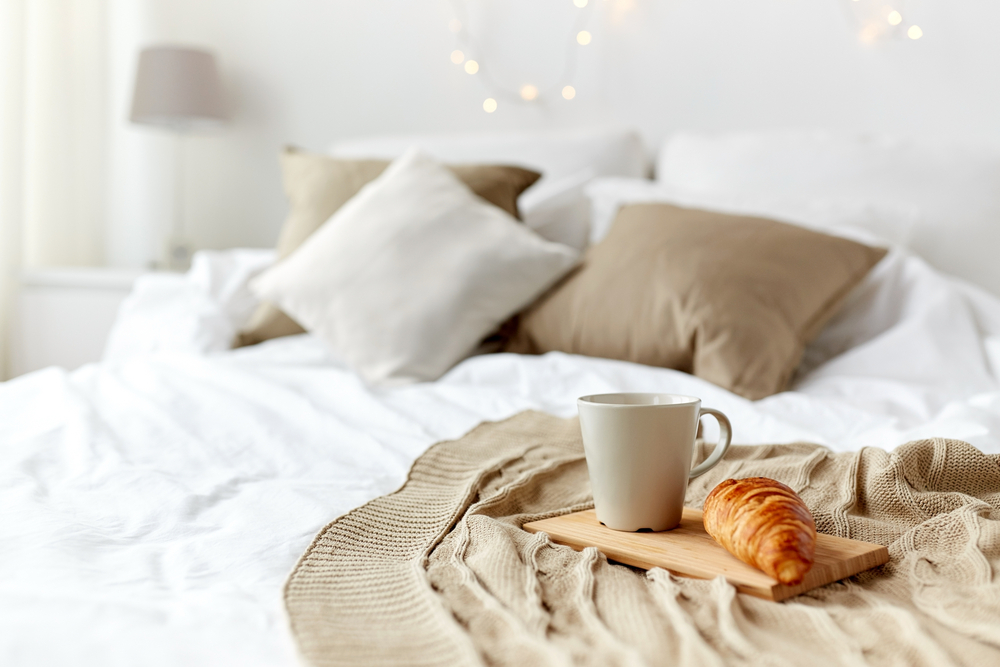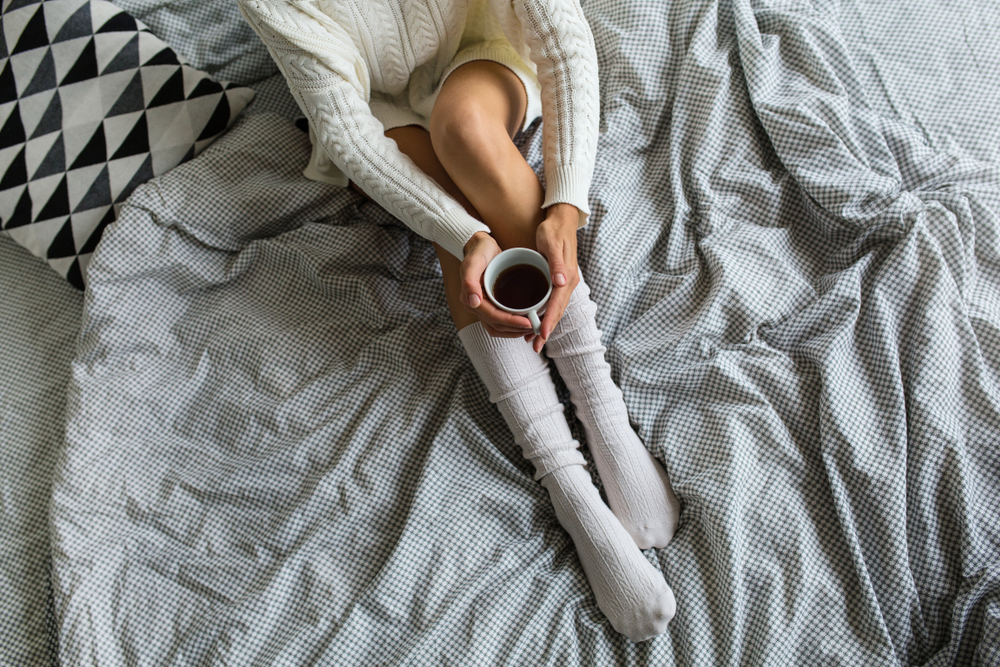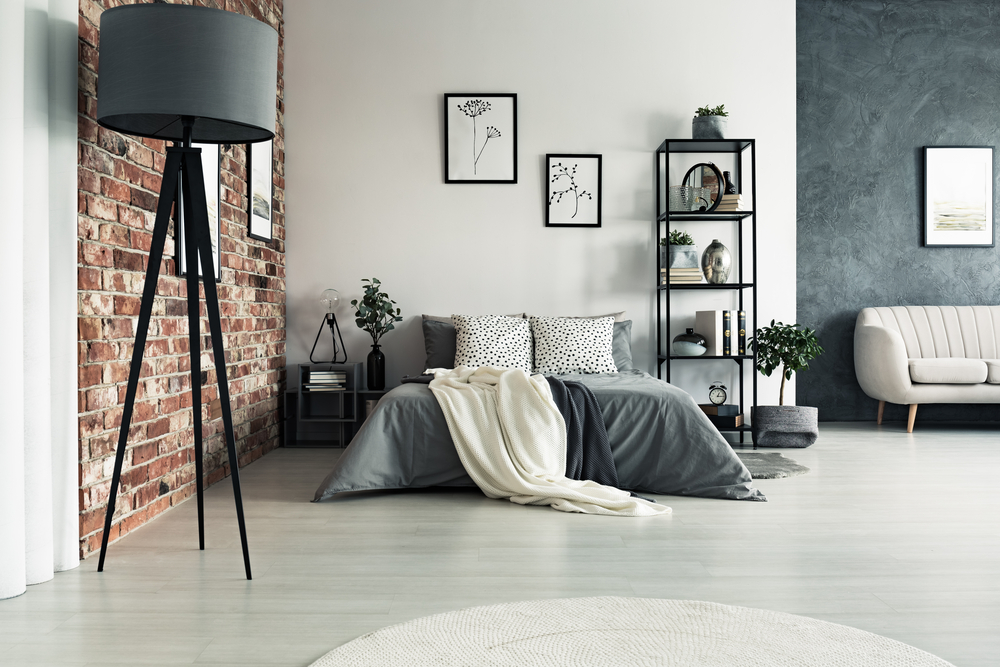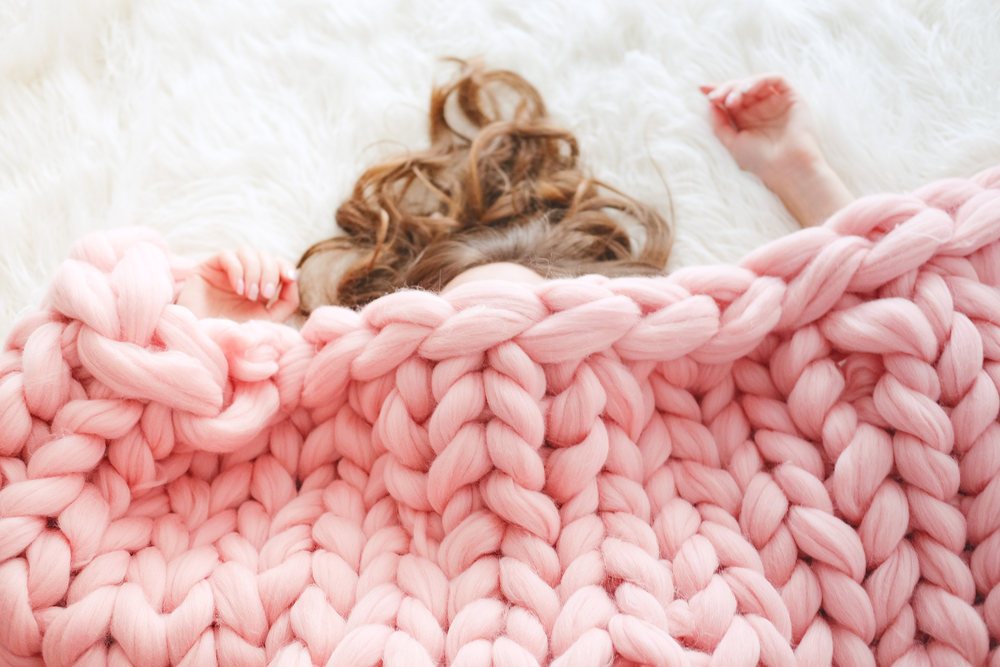7 Bedroom Changes To Make For A Better Winter Sleep
Struggling to get a good night’s sleep? You’re not alone. According to a study from the Sleep Health Foundation, 23.7 percent of Australians don’t get enough sleep and 34.7 percent Australians wake up feeling unrefreshed. The good news is there are easy changes we can make in the bedroom that can have a big impact on our sleep. ’With a few simple tweaks in your bedroom, you can increase the chances of a more blissful sleep,’ says Professor Dorothy Bruck from the Sleep Health Foundation.

PICK THE RIGHT QUILT
With so many quilts to choose from, it’s important to pick one that suits your needs and the season. Wool is great choice for sleepers that feel the cold through winter. ‘It offers a heavier weight, and is a natural fibre that boasts insulating qualities that will keep you warm, but still allow your skin to breathe,’ explains Stacey Kastrounis, buying director at The Home.
‘Another great option is feather and down. Down has the highest fill power of all quilt fillings available, so look for a quilt with a higher percentage of down for ultimate comfort,’ she adds. For a look that’s both cosy and sophisticated, try Sherpa bedding that oozes comfort and luxury.
Choose high-quality sheets with a high thread count to ensure you get the optimum in comfort every night.
BE SMART WITH YOUR SHEETS
Always choose high-quality sheets with a high thread count such as 1200 to ensure you get the optimum in comfort every night. In addition to high thread count cosiness, Professor Bruck says regulating your body temperature is key. ‘Our body temperatures often change throughout the night,’ she explains.
According to Stacey Kastrounis, natural fibres such as the increasingly popular bamboo are great as they will adjust to you. ‘Bamboo sheets are thermo-regulating which means they adjust to your body temperature. They will keep you warm in winter and cool in summer because they are highly absorbent.’

GO FOR AN OVERSIZED LOOK
Professor Bruck recommends not tucking your sheets or donna covers into the bed. “During the night if you get warmer, so if your feet or arms are trapped under the covers, you may get too hot and wake up,” she says.
An easy solution to this problem in winter, and one that will make your bed look more luxurious, is to go up a size when it comes to your doona. ‘If you go from queen to king with the doona, the edges of the doona will nicely wrap around the mattress in a loose way, giving you plenty of room to move,’ says Stacey.

GET THE RIGHT SUPPORT
Both Professor Bruck and Stacey agree it is important to have a good, supportive mattress, as we spend on average 25 years of our lives sleeping.
‘A good quality mattress usually comes with a great long term warranty. One way to refresh your mattress, and to improve comfort, is to add a topper, whether this be made from memory foam, feather or allergy free materials such as bamboo,’ says Stacey.
BE AWARE OF LIGHT
Light is important when it comes to your body clock. ‘During the night, it’s important to block out as much light as possible. But when you wake up, it’s good if you can open the curtains and let the light in to help you wake up,’ says Professor Bruck.
According to Stacey, a common mistake many make in their bedrooms is to have overly heavy curtains that take over the room. ‘Consider roller blinds in a neutral fabric instead of big heavy drapes – you can still have the block-out effect but in a subtler way. Also, they’re easy to roll up in the morning so you can get in as much light as possible.’

SORT YOUR PILLOWS OUT
Getting the right support when it comes to your pillow is critical. ‘If you’ve got a bad pillow, you will feel like you haven’t actually slept in the morning. This is particularly important for light sleepers,’ says Professor Bruck.
According to Stacey, you should pick a pillow that suits the position you sleep in. ‘The key is to have your spine and neck aligned, so choose the right pillow that will support that alignment, which will depend on whether you sleep on your back, side or stomach.’
CALM YOUR COLOURS
The colour of your walls or bedlinen can have an impact on your sleep. Calm, relaxing shades such as Pantone’s Colour of the Year rose quartz and serenity, as well as neutral colours, can create a more serene space. ‘Avoid fiery colours such as red, orange or yellow, as they have the opposite effect,’ says Stacey.